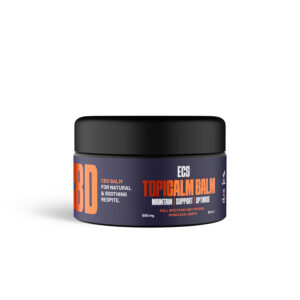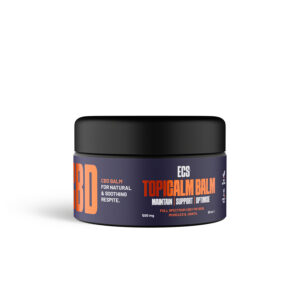
In recent years, CBD balm has emerged as a popular remedy claimed to alleviate a variety of ailments, from muscle pain to skin conditions. With countless testimonials and anecdotal evidence backing its effectiveness, many are left wondering if this topical solution genuinely delivers on its promises. As the market floods with an array of CBD-infused products, it’s crucial to sift through the noise and understand what CBD balm is, how it works, and whether the science supports its purported benefits. In this article, we’ll delve into the world of CBD balm, examining its potential advantages and offering practical insights to help you make an informed decision.
CBD balm is a topical ointment infused with cannabidiol, a compound derived from the cannabis plant. Unlike THC, CBD is non-psychoactive, meaning it doesn’t produce a “high”. Typically, CBD balm is made by blending CBD extract with a carrier oil, such as coconut or olive oil, and other natural ingredients like beeswax and essential oils. This creates a smooth, spreadable product that can be applied directly to the skin. The balm is designed to interact with the body’s endocannabinoid system, which plays a role in regulating pain, inflammation, and other critical functions. Many users apply CBD balm to specific areas of discomfort, such as sore muscles or irritated skin, in the hope of finding localised relief. With various formulations available, it’s essential to check the concentration of CBD and the presence of any additional ingredients to ensure the balm suits your needs.
CBD balm works by leveraging the body’s endocannabinoid system (ECS), which is involved in regulating various physiological processes, including pain, mood, and inflammation. When applied to the skin, the balm is absorbed through the epidermis, allowing CBD to interact with the cannabinoid receptors present in the skin. This interaction can help modulate the body’s response to pain and inflammation at the site of application. Unlike oral CBD products, which must pass through the digestive system, topical CBD provides more targeted relief. The balm’s other ingredients, such as essential oils and carrier oils, can also contribute to its soothing effects by moisturising the skin and providing additional anti-inflammatory properties. While research on CBD balm is still in its early stages, many users report positive outcomes, suggesting it may be a valuable tool for managing localised discomfort and skin issues.
CBD balm comprises several key ingredients, each playing a specific role in its effectiveness and application. The primary ingredient is, of course, cannabidiol (CBD) extract, typically sourced from hemp plants to ensure low THC levels. This extract is combined with a carrier oil, such as coconut, olive, or jojoba oil, which helps dilute CBD for easier absorption into the skin. Beeswax is another common component, providing the balm with its solid consistency and helping to lock in moisture. Essential oils, like lavender or eucalyptus, are often added for their aromatic properties and potential therapeutic benefits, such as relaxation or additional anti-inflammatory effects. Some formulations may include herbal extracts like arnica or calendula, known for their soothing properties. It’s crucial for users to review ingredient lists, especially if they have allergies or sensitivities, to ensure the balm is safe and suitable for their skin type.
CBD balm is widely recognised for its potential pain relief properties, making it a popular choice for those managing chronic pain conditions or temporary discomfort. When applied to the skin, CBD interacts with local cannabinoid receptors, which can help reduce pain and inflammation in the targeted area. This localised application is particularly beneficial for individuals dealing with joint pain, muscle soreness, or specific injuries, as it allows for concentrated relief without affecting the entire body. Moreover, the balm can be a preferable option for those who wish to avoid systemic side effects often associated with oral pain medications. Users of CBD balm often report a soothing sensation that alleviates discomfort, making it a practical supplement to existing pain management routines. While scientific research is ongoing, anecdotal evidence suggests that CBD balm may be an effective, natural alternative for individuals seeking to manage pain without conventional pharmaceuticals.
CBD balm is increasingly noted for its potential to improve skin health, offering benefits that extend beyond pain relief. Thanks to its anti-inflammatory properties, CBD can help calm irritated or inflamed skin, making it a promising option for conditions such as eczema, psoriasis, and acne. The antioxidants present in CBD may also contribute to reducing oxidative stress, which is a factor in the ageing process and skin damage. When combined with moisturising agents like carrier oils and beeswax, CBD balm can hydrate the skin, enhancing its texture and appearance. Essential oils included in many formulations can further contribute to skin health through their own therapeutic properties. Regular use of CBD balm may lead to visibly healthier skin, with users reporting improvements in skin tone and reduced redness or swelling. While individual results can vary, the soothing nature of CBD balm makes it a valuable addition to skincare routines focused on achieving balanced and healthy skin.
CBD balm is lauded for its significant anti-inflammatory effects, which make it a versatile tool in managing various inflammatory conditions. Inflammation is a common underlying issue in many ailments, including arthritis, skin disorders, and muscle injuries. By applying CBD balm directly to the affected area, users can potentially reduce inflammation locally without impacting other bodily systems. The anti-inflammatory properties of CBD stem from its ability to interact with the endocannabinoid system, which helps regulate immune responses and inflammation. Additionally, many CBD balms contain supplementary ingredients like arnica and essential oils, known for their own anti-inflammatory benefits. These compounds work synergistically to enhance the balm’s overall effectiveness. Users frequently report reduced swelling and improved comfort levels, highlighting CBD balm’s potential as a natural alternative or complement to traditional anti-inflammatory treatments. While more research is needed to fully understand the mechanisms, CBD balm offers a promising option for those seeking relief from inflammation-related issues.
While CBD balm is widely used for its purported benefits, scientific research specifically focusing on topical CBD products is still emerging. Current studies have primarily concentrated on CBD’s general effects rather than balms specifically. However, some research has shown promise in highlighting CBD’s potential in reducing pain and inflammation, which supports the anecdotal claims regarding CBD balm. For instance, studies have indicated that CBD possesses anti-inflammatory properties and may influence pain pathways, suggesting its efficacy in topical form. Additionally, research into skin conditions has found that cannabinoids can help reduce sebum production and have antimicrobial properties, hinting at CBD balm’s potential benefits for acne. While these studies provide a foundation, more focused research is required to firmly establish the effectiveness of CBD balm. As interest in CBD continues to grow, it is likely that future studies will delve deeper into the specific benefits and mechanisms of CBD balm, offering more conclusive evidence.
Experts in the field of cannabinoid research often emphasise the potential benefits of CBD balm, though they also acknowledge the limitations of current data. Dermatologists and pain management specialists generally view CBD balm as a promising alternative or complement to traditional treatments, particularly because of its anti-inflammatory and analgesic properties. Some experts suggest that, while more rigorous clinical trials are necessary, the existing evidence and user testimonials offer a compelling case for the balm’s efficacy in managing localised pain and skin conditions. Researchers also highlight the importance of formulation, noting that the concentration of CBD and the presence of other synergistic ingredients can significantly influence outcomes. Many experts call for standardised regulations and quality controls to ensure consumers receive products that are both safe and effective. As the body of research grows, expert opinions are likely to become more definitive, potentially leading to wider acceptance of CBD balm in therapeutic settings.
User testimonials and experiences play a crucial role in understanding the real-world effectiveness of CBD balm. Many users report positive outcomes, particularly in managing pain and improving skin conditions. Individuals suffering from chronic pain conditions, like arthritis or fibromyalgia, often share stories of reduced pain and increased mobility following regular use of CBD balm. Similarly, those with skin issues, such as eczema or psoriasis, frequently note improvements in inflammation and overall skin appearance. These anecdotal accounts, while not scientific, offer valuable insights into the potential benefits of CBD balm. Users often emphasise the importance of consistency and proper application to achieve the best results. Additionally, the choice of balm, including CBD concentration and additional ingredients, can significantly impact individual experiences. While personal testimonials should be considered alongside scientific evidence, they provide a compelling narrative of CBD balm’s potential, offering hope to those seeking alternative remedies for their conditions.

When choosing a CBD balm, several factors should be taken into account to ensure you select a product that meets your needs. Firstly, consider the CBD concentration. Products with higher CBD content may offer more potent effects, but it’s essential to start with a lower concentration if you’re new to CBD. Secondly, examine the ingredients list. Opt for balms that use natural, high-quality ingredients and avoid those with artificial additives or allergens. The extraction method used for the CBD is also crucial; CO2 extraction is considered one of the safest and most effective methods. Additionally, consider the presence of complementary ingredients like essential oils or herbal extracts, which can enhance the balm’s therapeutic effects. Lastly, check for third-party lab testing. Reputable brands will provide lab results that verify the product’s potency and purity, ensuring you’re getting a safe and effective balm. Taking these factors into account will help you make an informed choice.
Reading labels and understanding ingredient lists is critical when selecting a CBD balm. A well-labelled product should clearly state the amount of CBD it contains, often measured in milligrams. Knowing the CBD concentration helps you gauge the balm’s potency and suitability for your needs. It’s also important to identify the type of CBD used—full-spectrum, broad-spectrum, or CBD isolate—as each offers different benefits. Full-spectrum products contain a variety of cannabinoids and may deliver the entourage effect, while isolates offer pure CBD. The ingredients list should include natural and beneficial components, like essential oils or herbal extracts, and be free from harmful chemicals or synthetic fragrances. Look for balms that use high-quality carrier oils, like coconut or jojoba, which aid in skin absorption. Additionally, check for any allergens or irritants, especially if you have sensitive skin. By carefully reviewing labels, you can select a balm that aligns with your health goals and personal preferences.
Choosing a CBD balm from a trusted brand can significantly impact your overall experience and results. Reputable brands are typically transparent about their sourcing and manufacturing processes, providing detailed information about the origin of their hemp and the extraction methods used. Look for companies that conduct third-party lab testing and make these results accessible to consumers. This ensures that their products are accurately labelled and free of harmful contaminants. Established brands often have a history of positive customer reviews and testimonials, which can provide additional assurance of quality and effectiveness. Moreover, trusted companies usually offer customer support and satisfaction guarantees, adding an extra layer of reliability. While newer brands may also offer excellent products, those with a proven track record are often a safer bet when navigating the growing CBD market. Researching and selecting a brand known for its quality and integrity will help you find a CBD balm that meets your expectations and needs.
While CBD balm is generally considered safe for topical use, there are some common side effects that users should be aware of. Skin reactions are the most frequently reported, including redness, itching, or irritation at the site of application. These reactions are usually mild and temporary, often resulting from sensitivity to CBD or other ingredients in the balm. To minimise the risk of adverse effects, it’s wise to perform a patch test on a small area of skin before full application. Some users might experience an allergic reaction to specific components, such as essential oils or preservatives, emphasising the importance of reviewing ingredient lists. Unlike oral CBD products, topical CBD is unlikely to cause systemic side effects since it doesn’t enter the bloodstream in significant amounts. However, if any side effects persist or worsen, it is advisable to discontinue use and consult a healthcare professional. Awareness of these potential side effects can help users apply CBD balm safely and effectively.
While CBD balm is generally safe for most people, certain individuals should exercise caution or avoid using it altogether. Those with known allergies to cannabinoids or specific ingredients within the balm should refrain from use to prevent adverse reactions. Pregnant or breastfeeding women are advised to consult a healthcare professional before using CBD products, as there is limited research on its safety for these groups. Individuals with sensitive skin conditions may also wish to avoid CBD balm, especially if it contains essential oils or other potential irritants. Additionally, anyone currently taking medication should speak with a doctor to rule out possible interactions, even though systemic absorption from a topical application is minimal. People with severe skin conditions or open wounds should avoid applying CBD balm to these areas, as it may exacerbate symptoms or delay healing. Ultimately, consulting with a healthcare provider can help determine whether CBD balm is an appropriate choice for your specific health needs.
When using CBD balm, taking certain precautions can help ensure safe and effective application. Start by performing a patch test on a small area of skin to check for any adverse reactions, especially if you have sensitive skin or allergies. Apply a small amount and monitor for signs of irritation over 24 hours. It’s important to follow the manufacturer’s instructions regarding the amount and frequency of application to avoid potential side effects. Store the balm in a cool, dry place to maintain its efficacy, and check the product’s expiry date before use. Avoid contact with eyes, mucous membranes, and broken skin to prevent irritation. If you’re using other topical medications, space out the application times to prevent interactions. Always consult a healthcare professional if you’re unsure about using CBD balm, particularly if you have pre-existing medical conditions or are taking medication. By adhering to these safety tips, you can use CBD balm with greater confidence and benefit.
